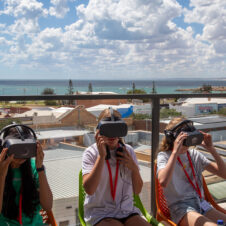Deep space images shed light on dark matter
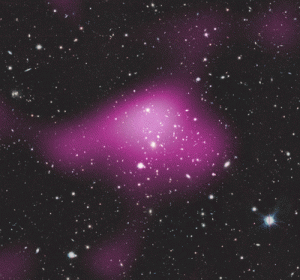
New images of deep space are helping to shed light on dark matter, the invisible material that accounts for more than 80 per cent of all the matter in the Universe.
The images are the first from an international collaboration, involving ICRAR and Durham University, which is seeking to understand the amount of dark matter in the Universe and its distribution in groups of galaxies – such as the group that houses the Milky Way.
The study hopes also to improve scientists’ knowledge of how galaxies are formed. Being able to explain dark matter, which is little understood, would represent a major scientific breakthrough, the researchers said.
The team analysed images of more than two million galaxies, typically 5.5 billion light years away. They combined these unique images with the identification of 20,000 groups of galaxies, that are located between the Milky Way and these more distant galaxies.
Combining this information enabled the team to measure the influence of dark matter on the shape of background galaxies by examining how light from those galaxies is distorted by the gravitational pull of massive clumps of dark matter in which groups of galaxies reside.
The researchers found that groups of galaxies typically contain 30 times more dark matter than the visible matter seen in stars.
They also showed that the brightest galaxy in each group nearly always sits at the centre of the dark matter clump that surrounds it. This is the clearest demonstration to date of this phenomenon, predicted by theories of galaxy formation.
The research used images captured by the VLT Survey Telescope at the European Southern Observatory in Paranal, Chile, by the Kilo-Degree Survey (KiDS), and distance information of foreground galaxies measured at the Anglo-Australian Telescope in Australia, by the Galaxy And Mass Assembly (GAMA) survey. GAMA is an international collaboration led by ICRAR at the University of Western Australia.
The mass mapping study of more than two million galaxies is led by Leiden University, in the Netherlands, and was carried out in close collaboration with scientists from Durham University and University of Western Australia, while relying on a significant collaborative effort from many partners, including Edinburgh, Oxford, UCL universities in the UK and scientists based in Italy, Germany, and Australia as well.
The findings are just the start of a major programme to exploit the immense datasets coming from the survey telescopes and the data are now being made available to scientists worldwide through the ESO archive.
The research has been accepted for publication in Monthly Notices of the Royal Astronomical Society.
More information and contacts via Durham University.
Images
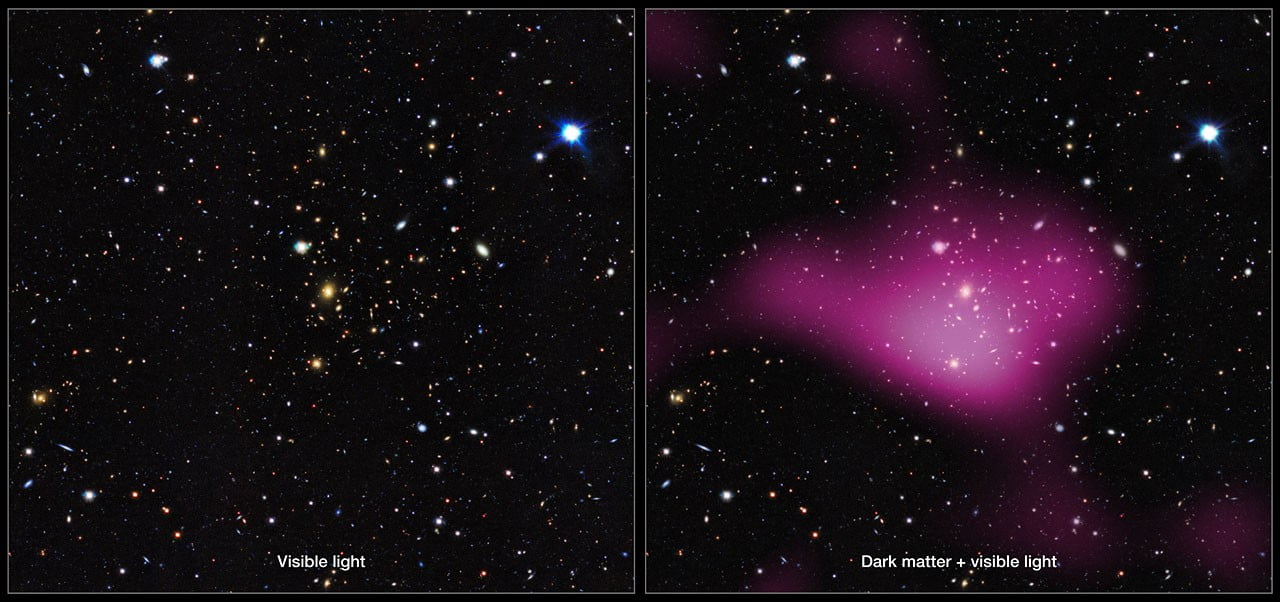
First Results from the KiDS Survey (montage). Left, a group of galaxies mapped by KiDS. Right, the same area of sky, but with the invisible dark matter rendered in pink. Credit: Kilo-Degree Survey Collaboration/A. Tudorica & C. Heymans/ESO
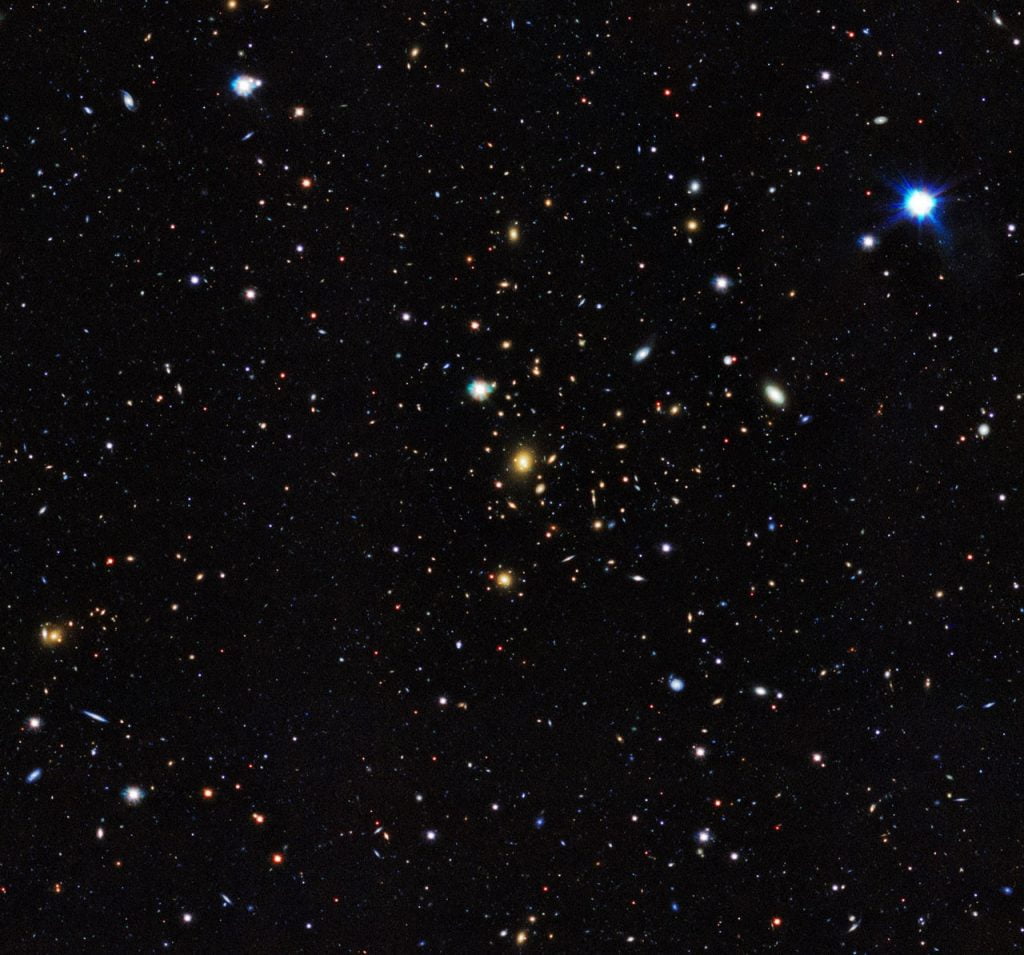
First Results from the KiDS Survey (visible light). A group of galaxies mapped by KiDS. Credit: Kilo-Degree Survey Collaboration/A. Tudorica & C. Heymans/ESO
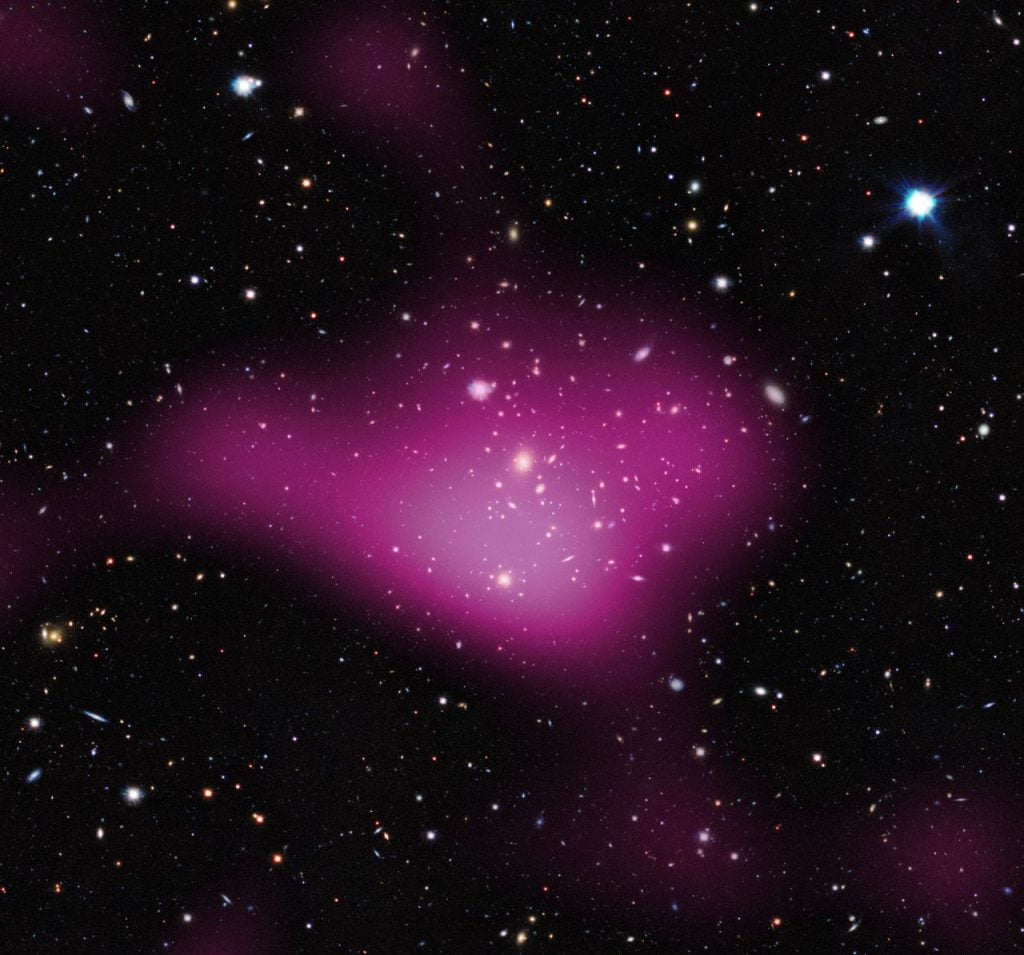
First Results from the KiDS Survey (dark matter). Invisible dark matter is seen rendered in pink on top of the visible-light image. Credit: Kilo-Degree Survey Collaboration/A. Tudorica & C. Heymans/ESO
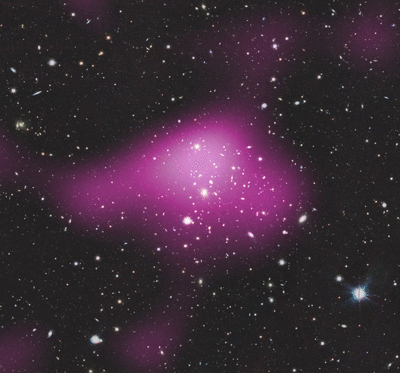
Original Publication
Dark matter halo properties of GAMA galaxy groups from 100 square degrees of KiDS weak lensing data, Viola M et al, has been accepted by Monthly Notices of the Royal Astronomical Society.

